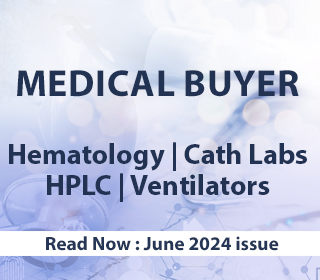International Circuit
FDA sets up AML for medical devices
The Additive Manufacturing Program in the FDA’s Center for Devices and Radiological Health (CDRH) researches the effects of innovative manufacturing technologies to help ensure patient access to medical devices that are safe and effective. Referred to as the FDA Additive Manufacturing Lab, this is one of 20 research programs in CDRH’s Office of Science and Engineering Laboratories (OSEL).
AM and medical devices
In the past decade additive manufacturing went from a niche manufacturing technology to the preferred manufacturing method for hearing aids and metal spine cages. To date, the FDA has cleared over 100 devices made using additive manufacturing technologies.
While there are several other orthopedic, dental, and diagnostic applications utilizing the technology, the full promise of additive manufacturing has not yet been realized by the broader medical device community. Despite the full adoption of additive manufacturing in some product areas, regulatory science research in this space will spur medical device design, materials, and manufacturing innovation.
Regulatory science gaps and challenges
The Additive Manufacturing Program is driven by several significant regulatory science gaps and challenges. Firstly, there is a considerable level of uncertainty surrounding the testing and validation of additive manufacturing processes, particularly in predicting the performance of medical devices. This uncertainty has hindered innovation, discouraged investments, and slowed down the adoption of additive manufacturing in the medical field. Secondly, additive manufacturing encompasses a wide spectrum of technologies involving hardware, software, and materials, all of which are continuously evolving.
This constant evolution necessitates ongoing adjustments in the specifics of process validation and regulatory review, creating an additional challenge. Thirdly, the simplicity of additive manufacturing has led clinicians and hospitals to explore its potential for manufacturing medical devices on-site, requiring guidance in this endeavor.
The overarching goal of the Additive Manufacturing Program is to address these knowledge gaps by promoting an understanding of how additive manufacturing technologies impact the evaluation of medical devices’ benefit-risk ratio. Additionally, it aims to enhance the FDA’s readiness to handle additive manufacturing-related issues in both the premarket and postmarket stages of the medical device lifecycle.
FDA Additive Manufacturing Lab activities
The Additive Manufacturing Program is dedicated to conducting regulatory science research in specific areas of interest. These include activities related to process validation and process monitoring for various advanced manufacturing technology types. Another key focus is addressing issues associated with compliance with quality system regulations, which entails devising efficient performance testing methods for evaluating lattice structures and identifying critical parameters for optimized topology.
Additionally, the program concentrates on developing software workflows that facilitate additive manufacturing, particularly in applications customized for individual patients. VoxelMatters







